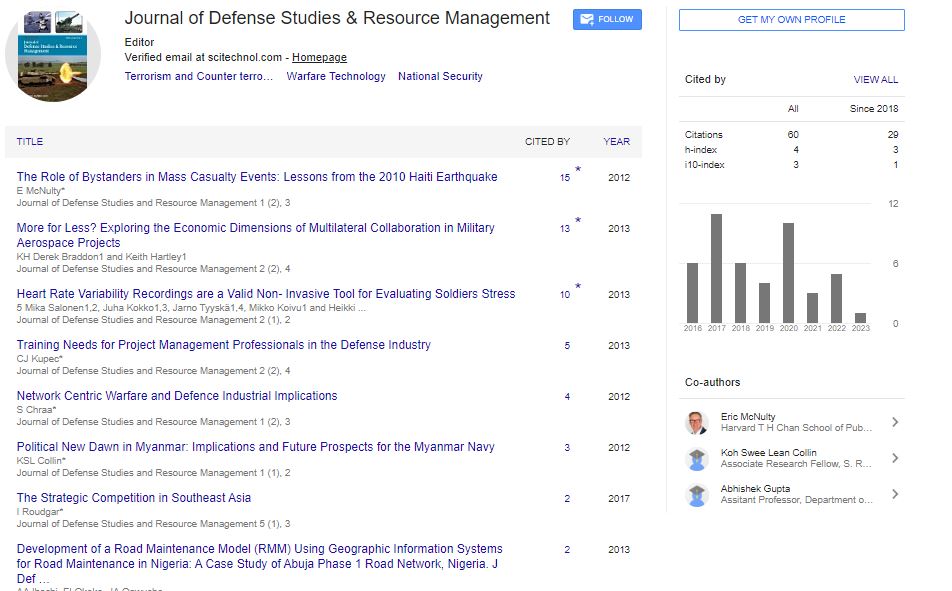Commentary, J Def Stud Resour Manage Vol: 9 Issue: 1
Study on Global Defense Market
Lucy*
Department of Political Sciences, Northwestern University, United States
*Corresponding Author: Lucy Department of Political Sciences, Northwestern University, United States, E-Mail: slucy34@uoc.uk
Received: 05 November, 2021; Accepted: 19 November, 2021; Published: 26 November, 2021
Keywords: Defense Market
Introduction
The defense market consists of the sale of aerial, offshore and groundbased military (organizations, sole traders and affiliates) that produce air-based, maritime and global military equipment such as radar, satellites, sonar and other auxiliary equipment or maintenance and repairs. The defense market is divided into air defense systems; maritime-based defense; ground-based protective defense, repair and overhaul of equipment and security support.
Asia Pacific was the largest region in the global defense market, accounting for 34% of the market by 2020. North America was the second largest region accounting for 25% of the global defense market. Africa was the smallest region in the global defense market.
The global defense market is in a state of flux and is responding to a number of geopolitical changes, most notably the reform of the Presidential Administration in the United States, has withdrawal of US military equipment from major conflict zones, meaning countries within Europe, the Middle East and the United States. Africa region (EMEA) is now forced to rely on the establishment of military bases. Many countries are hesitant to join ‘low boots’ to enforce / maintain the security of their nation, which is why the global trend of large-scale investment in private arts also has an impact within the EMEA.
Thus, combined with the necessary military independence of the nations within the region creates an environment that is more focused on local or regional production efforts and an increase in the delivery of vacant crafts. As the UK emerges from the European Union, it ensures involvement and coherence in the international theater by engaging in international relations.
The political developments mentioned at the outset also have a bearing on how nations develop, maintain, and train their armed forces. As a result of the US exit from major conflict zones and international tensions, the threatening will be shifted from being equitable, and focus on the nations profile. The merger of the C4ISR with Systems with cooperatives is a well-known topic in the industry, which enhances the efficiency of low-level troops.
The information gap is filled by strengthening the relationship between government agencies and the trade sector across the region, regional agreements between friendly countries, and new communications relations should be made. The Middle East has shown impressive development to enter into many US-affiliated businesses -and UK-based military contracts to do local things, with the UAE by restoring its relations with Israel and opening new trade channels and information.
The historical transformation of the international trade in ships and aircraft provides an example of changes in the importance of various countries as importers and exporters in these markets. defence market mainly discusses about international strategies for maintaining the security of its industries. Finally, the European defense industry base and financial constraints explores the challenges and solutions facing in European countries. It examines the impact of international budgetary constraints on the European defense industry and the role of international cooperation in developing tools, and contractor strategies to close key institutions, redevelop their company, and focus on international trade.
Acknowledgement
None
Conflict of Interest
None
 Spanish
Spanish  Chinese
Chinese  Russian
Russian  German
German  French
French  Japanese
Japanese  Portuguese
Portuguese  Hindi
Hindi 